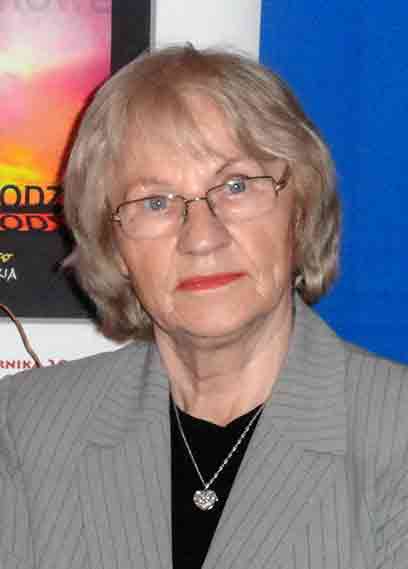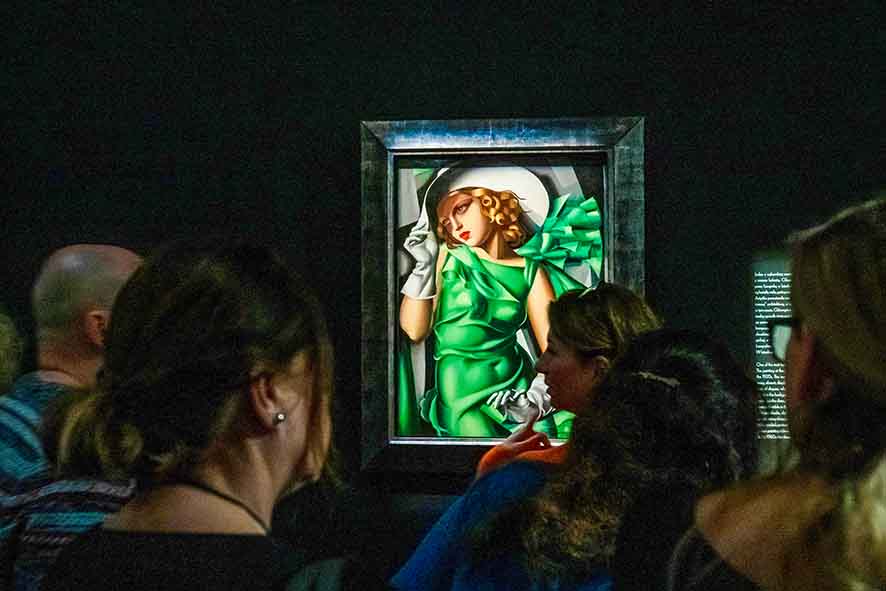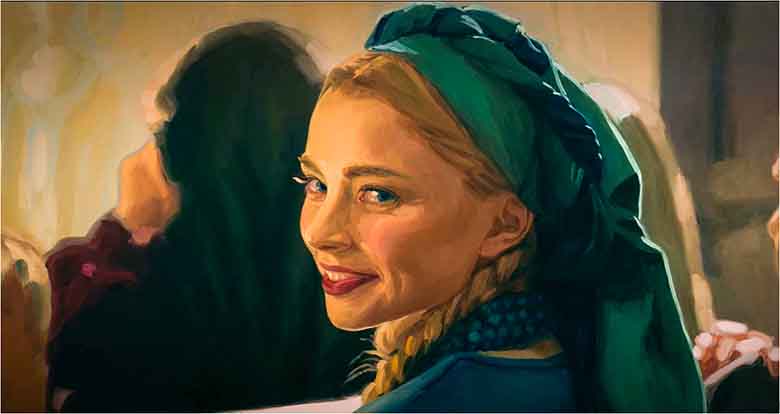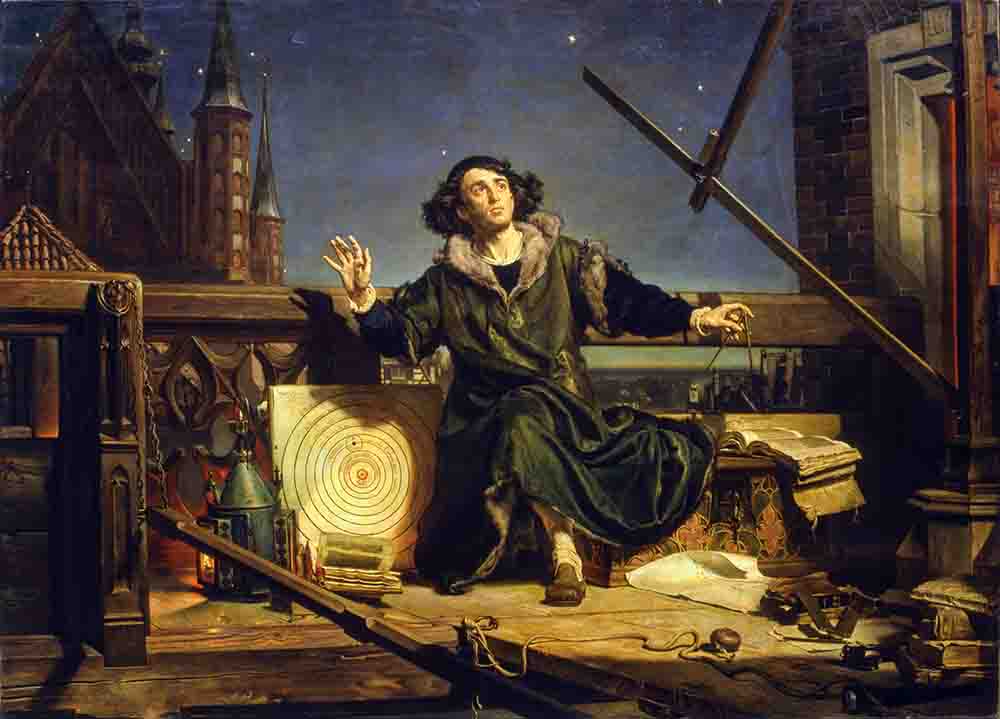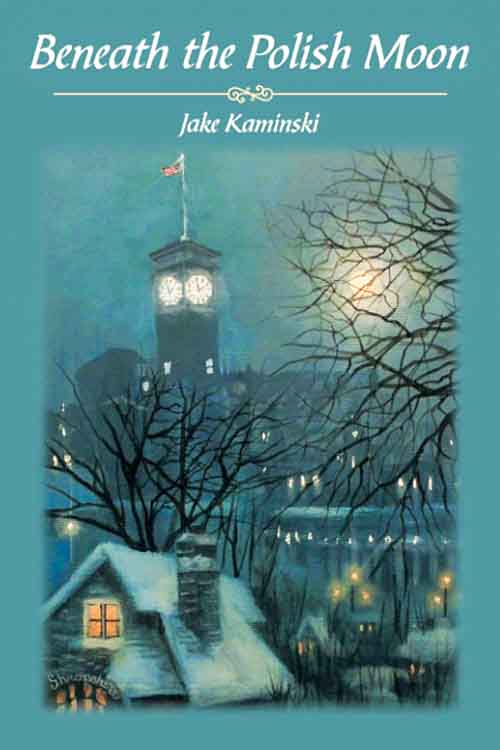Tamara Łempicka's paintings fetch exorbitant prices at art auctions. She is undoubtedly the most expensive and most recognizable Polish painter in the world. Owning one of her paintings has become fashionable among modern celebrities. They are collected by Madonna, Jack Nikolson and Barbara Streisand.
In 2018, her painting La Musicienne was sold at an auction in New York for over USD 9 million, becoming the highest auctioned painting by a Polish artist in history. A year later, the painting La tunique rose was sold for USD 13.3 million (PLN 52 million). Another record was broken in 2020. The painting Portrait de Marjorie Ferry was sold for 16.28 million British pounds (PLN 82 million).

Tamara Łempicka (Source: Wikipedia)
Who was the author of these paintings — Tamara Łempicka — and why are her works so important and valuable?
Determining the facts of her life poses many difficulties because Tamara created her biography, depending on her needs, confabulated, created myths.
Biographers claim that she was born as Maria on May 16, 1898, in Moscow. She herself and her family (her granddaughter and great-granddaughter) say that later (1902?), in Warsaw. The original birth certificate has never been found. The family, both on the father's and mother's side, had Jewish roots. Father Borys Gurwicz-Górski was a Russian Jew, a wealthy merchant who maintained contact with the aristocracy and the intellectual elite. Her mother Malwina came from a wealthy Dekler family (grandfather Bernard was a banker), very well-assimilated Polish Jews. Tamara has always emphasized that she was Polish and that was how the world remembered her, although Poland forgot about her for quite a long time.
Her father left the family quite abruptly and it is not known what happened to him. Tamara and her sister Adrianna were brought up by their grandparents, who belonged to the capital's social and cultural elite. They were friends with, among others, Ignacy Jan Paderewski and Artur Rubinstein. Grandmother Klementyna Deklerowa, who traveled with them around Europe, had a special influence on the education and upbringing of her granddaughters. Visiting museums with Renaissance art, she showed them not only the beauty and value of art, but also instilled in them that success is achieved through hard, systematic work, and that thanks to that effort, one can be whomever one wishes to be. Both granddaughters reached the top in their respective fields — Adrianna in architecture, and Tamara in painting.
In 1916, in St. Petersburg, Tamara married a lawyer, Tadeusz Łempicki, who was related to the family of CK Norwid. This year also saw the birth of Lempicka's only daughter, known as Kizette de Lempicka-Foxhall.
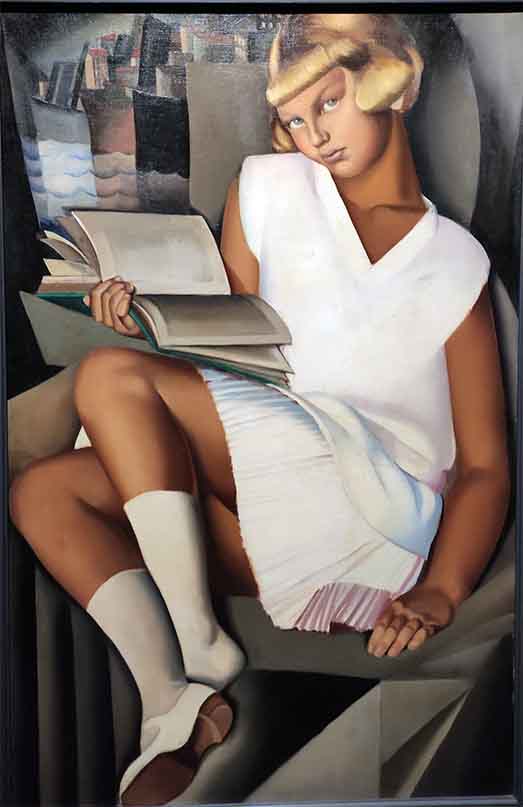
Kizette en rose, Tamara Łempicka,1927, Muzeum Narodowe, Kraków (Źródło: Wikipedia)
Soon, the October Revolution broke out and the Łempickis fled the repressions to Paris. The difficult financial situation caused Tamara Łempicka to start painting for money. It was the 1920s. In the First World War, many men died, whose role in social life was, of necessity, taken over by women.
There was a rapid development of technology, the development of radio, aviation, and the automotive industry, followed by social changes and feminist movements gaining more and more importance. Tamara Łempicka found her place very quickly in these turbulences. She led a very active social life, and had numerous affairs — both with men and women — which gave her the air of a scandalist. She gained fame as the creator of characteristic portraits and nudes.
In 1922, with the help of her sister, she exhibited her paintings-portraits for the first time at the Salon d'Automne. Her paintings were positively received, and she soon became famous as the portraitist Tamara de Lempicka. Her idealized portraits and nudes have slightly cubic forms, saturated colors, are sensual and perfect in terms of form. They were liked by the afluent audience. The author's style aroused more and more interest, which translated into the quantity of orders and wealth of the painter. Life lessons with grandmother Klementyna have now resulted in Tamara Łempicka developing her own style called Art Deco. Tamara de Lempicka was very hardworking and systematic. She was a hedonist, but also a very pragmatic woman. She combined fun with work. The people she played with either posed for her portraits, or bought them.

Self-portrait Tamara in green Bugatti, Tamara Łempicka (Source: Wikipedia)
A cult image, a manifesto of her style and a symbol of that period is her self-portrait Tamara in a green Bugatti. She painted it at the request of the director of a famous German reputable fashion magazine. It was intended for the cover of the magazine "Die Dame" and considered one of the typical art deco paintings. Today we would say that this portrait could be the best advertisement for cars, which in the 1920s were a sign of wealth and a symbol of a liberated woman. Fashion and lifestyle followed. Tamara became a symbol of the epoch, the dream of liberated women. The value of the painting also lies in its developed and recognizable style, which is a synthesis of modernism and classicism, combining elements of cubism with the techniques of the masters of the Renaissance.
The artist herself assessed her style as follows:
I was the first woman to paint cleanly and this was the basis of my success. Out of hundreds of paintings, mine would always stand out. And so galleries began to hang my works in their best places, always in the middle, because my paintings were attractive, precise, finished. My goal is never to copy.
The Paris period was her life's apogee of artistry and material affluence.
In her personal life at that time there were emotional breakdowns. In 1927, she divorced Tadeusz Łempicki and, in 1933, she married a wealthy Austrian baron Raoul Kuffner. Fleeing from the fascist politics of Germany, they moved to the United States, where Tamara was still looking for a place for herself and her art. In the States, art deco was no longer fashionable, giving way to expressionism, and so the term "baroness with a brush" stuck to her.
Tamara and her husband first settled in Beverly Hills, California. In 1943, they moved to New York, where she continued to create in her characteristic style and experimented with geometric abstraction and palette knife, but was not successful.
After Baron Kuffner's death in 1962, she moved to Houston, Texas. Her new works were not well received, so the artist gave up exhibiting them. In 1978 she moved to Cuernavaca, Mexico. She died there in her sleep on March 19, 1980. According to her wishes, the body was cremated and the ashes were scattered from a helicopter over the Popocatepetl volcano.
There are several of her paintings in Poland. They were rarely exhibited, e.g. at the exhibition at Zachęta in Warsaw in 1928, and at the General National Exhibition in Poznań in 1929. In the times of the Third Republic of Poland, Łempicka was in no way compatible with socialist realism, so she was forgotten.
Since 2018, since the 120th anniversary of her birth, Tamara de Lempicka's art has been experiencing a rapid renaissance. Her unusual, colorful paintings are the object of desire of art collectors, as evidenced by the fact that the price of most of the artist's works does not fall below a million dollars.
It is said that she "created the figure of the artist of all time". There are biographies, documentaries. There is a musical and other works that remind and commemorate her and her work. In cooperation with the "Tamara de Lempicka Estate", whose director is the painter's great-granddaughter Marisa, exhibitions and vernissages of her works are also organized in Poland. One of them is the exhibition "Tamara Łempicka - a woman on a journey" organized by the National Museum in Lublin.
It is good that thanks to Tamara de Lempicka, Poland is being talked about again.
Translation from Polish by Andrew Woźniewicz.



